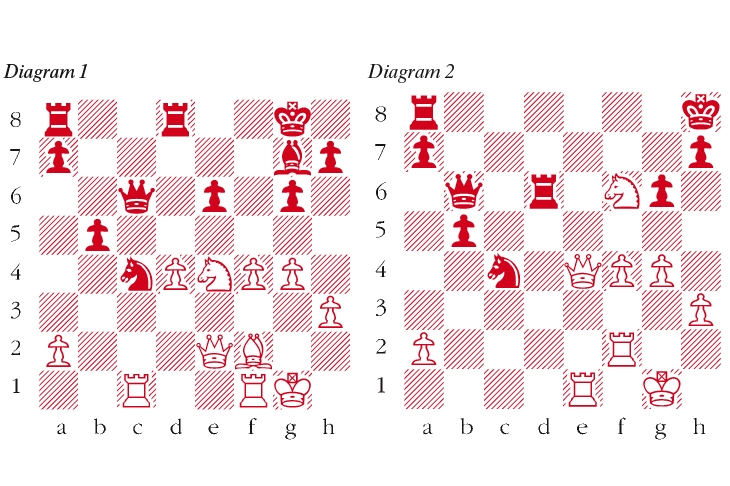The Chess Olympiad for national teams is now underway in Batumi, Georgia. Over 200 teams are competing and the lavish opening ceremony was attended by 5,000 spectators. This is certainly an indication of the increasing popularity of chess, paradoxically fuelled by the advent of computer technology. There are now 11 million online chess games played worldwide every day, and 600 million active chess players. Probably the most celebrated game ever played in a Chess Olympiad was the following clash between Boris Spassky and Bobby Fischer.
Spassky-Fischer: Siegen Olympiad 1970; Grünfeld Defence
1 d4 Nf6 2 c4 g6 3 Nc3 d5 4 cxd5 Nxd5 5 e4 Nxc3 6 bxc3 Bg7 7 Bc4 c5 8 Ne2 Nc6 9 Be3 0-0 10 0-0 Qc7 11 Rc1 Rd8 12 h3 White prepares to play f4 and g4, assaulting the strategically important point on f5. In a previous clash between the same players at Santa Monica 1966, Spassky had tried 12 Qe1. 12 … b6 13 f4 e6 14 Qe1 Na5 15 Bd3 f5 The correct response to White’s plan and one that guarantees Black a comfortable position from the opening. 16 g4 fxe4 17 Bxe4 Bb7 18 Ng3 Nc4 Fischer adopts an ambitious plan of attempting to win the white d-pawn. Another idea was the more prophylactic … Rf8, followed by … Rae8, … Bd5 and … Qc6. 19 Bxb7 Qxb7 20 Bf2 Qc6 21 Qe2 cxd4 22 cxd4 b5 23 Ne4 (see diagram 1) 23 … Bxd4 This capture of the d-pawn appears very risky and at the time it was widely condemned. However, computer analysis now vindicates this decision, regarding it as the best move. 24 Ng5 Bxf2+ 25 Rxf2 Rd6 This is a small step in the wrong direction. Fischer clearly wants to keep his rook active along the open d-file but the defensive 25 … Re8 is better. After 26 Ne4 Re7 White has insufficient compensation for the pawn. 26 Re1 Qb6 27 Ne4 Rd4 28 Nf6+ Kh8 Fischer is still playing to win. After 28 … Kg7 29 Qxe6 Qxe6 30 Rxe6 Rf8 Black would be in no danger of losing. 29 Qxe6 Rd6 If 29 … Rd1 White has 30 Qf7! which forces the win after 30 … Rxe1+ 31 Kg2 Ne3+ 32 Kf3 Qc6+ 33 Kg3 Rg1+ 34 Kh4 Rxg4+ 35 hxg4 Qh1+ 36 Kg5 30 Qe4 (see diagram 2) 30 … Rf8 Now Black begins to go downhill. The rook is passively placed here and is vulnerable to White playing Qe7. After 30 … Rad8 31 g5 Rd2 the position would be dynamically equal. 31 g5 Rd2 32 Ref1 Qc7 This is bad. Best was 32 … Rc8 33 Qe7 Qc7 when White is only slightly better. 33 Rxd2 Nxd2 34 Qd4 Rd8 Losing at once. The only try is 34 … Qb6 although the endgame after 35 Qxb6 axb6 36 Rd1 Rd8 37 Kg2 is fairly grim for Black. 35 Nd5+ Kg8 36 Rf2 Now the white attack will be too strong. 36 … Nc4 37 Re2 Rd6 38 Re8+ Kf7 39 Rf8+ Black resigns 39 … Kxf8 40 Qh8+ wins.
This week’s puzzle comes from what I think is the most brilliant combination ever played in a Chess Olympiad.
Raymond Keene
Batumi Olympiad

issue 29 September 2018




Comments